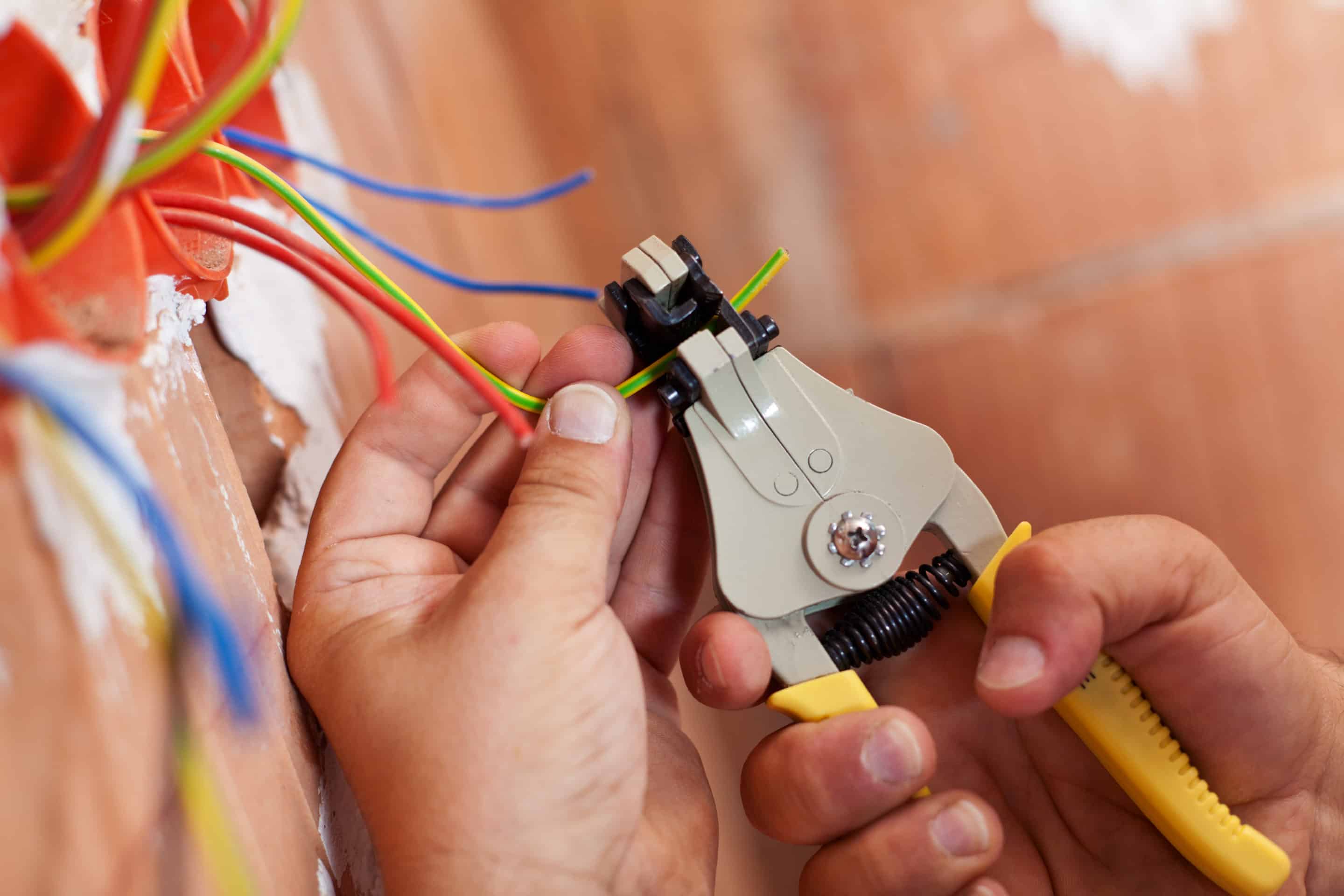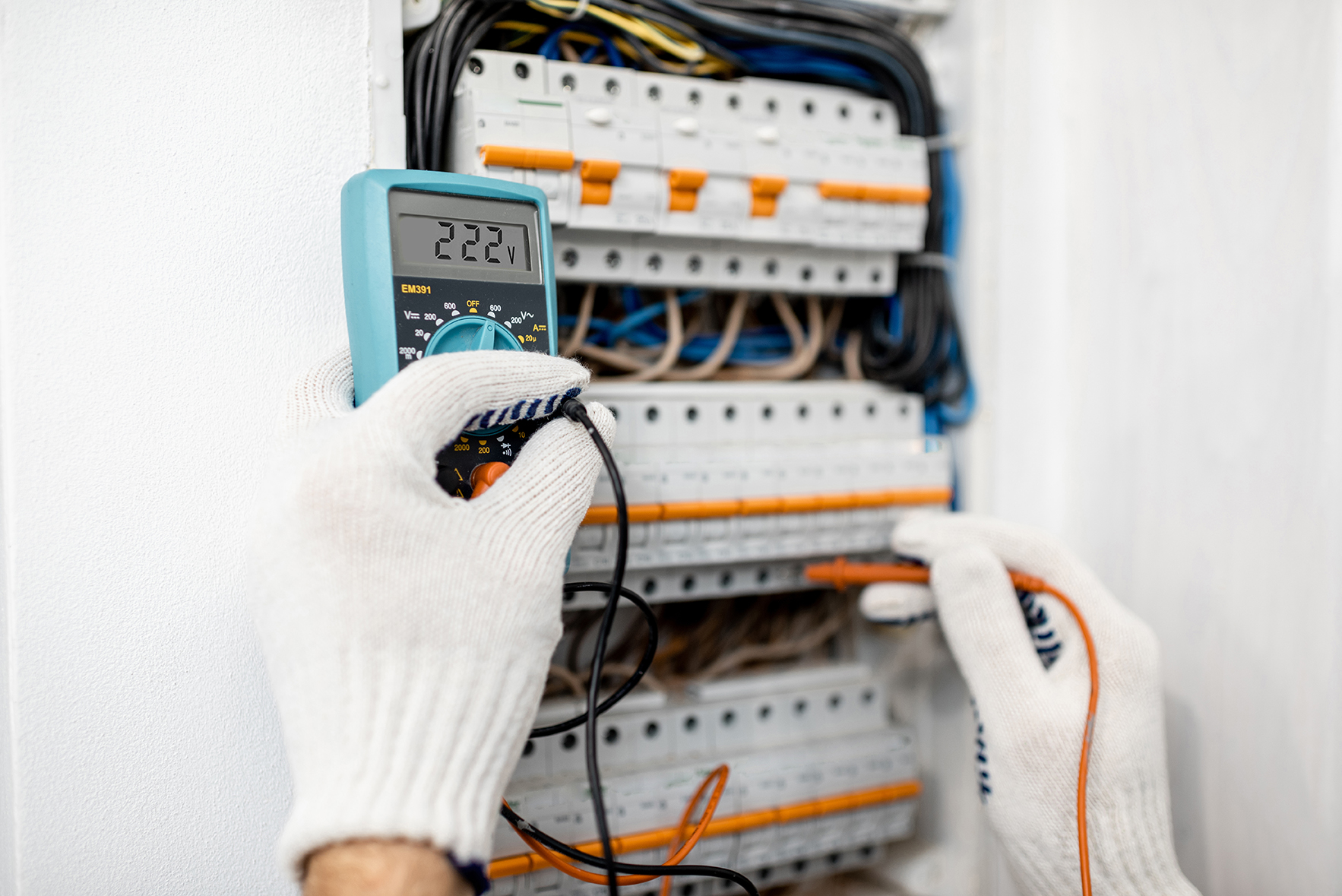Typical Electric Troubles Every Homeowner Must Find out about
House owners frequently come across various electrical troubles that can impact safety and performance. Concerns like flickering lights and stumbled breaker are more usual than several recognize. These scenarios can indicate deeper electric concerns that warrant attention. Comprehending the threats and indicators connected with obsolete circuitry and dead electrical outlets is essential. What steps can be required to protect against these problems? Exploring these usual electrical issues might disclose essential insights for preserving a safe home setting.

Flickering Lights: Reasons and Solutions
Why do some home owners experience flickering lights? Flickering lights can be a common aggravation, typically showing underlying electric concerns. One main reason is malfunctioning or loosened connections within light components or electrical wiring, which can result in periodic power supply. Furthermore, using high-wattage appliances on the exact same circuit may cause voltage fluctuations, leading to flickering or dimming. Another possible problem is an overloaded circuit, where a lot of devices attract power at the same time, stressing the electrical system. Additionally, degraded or obsolete circuitry can add to irregular electrical circulation. In many cases, flickering lights may signify a trouble with the home's electrical panel or service line. Homeowners ought to attend to flickering lights promptly to prevent possible risks. Solutions may consist of tightening links, redistributing home appliance load, or getting in touch with a licensed electrical expert for a thorough analysis. Identifying the source can assist guarantee a risk-free and secure electric system in the home.
Tripped Circuit Breakers: What You Need to Know
Have home owners ever questioned what creates their circuit breakers to trip suddenly? This common issue typically develops from an overload of electrical circuits, where a lot of devices draw power at the same time. In such cases, the breaker acts as a safety mechanism, interrupting the flow of electrical energy to stop getting too hot and potential risks. Another constant reason is a brief circuit, which happens when an online wire contacts a neutral cord, developing a surge of electrical energy that journeys the breaker. Ground faults can also bring about stumbled breakers; these happen when a real-time cable touches the ground or a grounded surface, positioning major security threats. Homeowners ought to frequently analyze their use of high-wattage appliances to prevent straining circuits. Additionally, recognizing the feature of breaker can assist them respond appropriately throughout a trip, ensuring their home continues to be well-kept and secure.
Obsolete Wiring: Indications and Risks
Obsolete electrical wiring can present significant threats to homeowners, frequently going undetected up until problems occur. Residences developed before the 1980s may still have aluminum circuitry or knob-and-tube systems, which are no longer considered risk-free. Indications of outdated electrical wiring consist of flickering lights, frequently stumbled circuit breakers, or shedding smells near outlets. These indications might recommend that the electric system is overloaded or deteriorating.Additionally, property owners might observe swelter marks around buttons or electrical outlets, which can indicate overheating. The threat of electric fires markedly enhances with outdated circuitry, as these systems were not created to manage modern electrical tons. Homeowners are motivated to have their electrical wiring examined frequently, especially when remodeling or including brand-new appliances. By identifying these signs early, they can prevent dangerous circumstances and keep a more secure living setting. Upgrading to current electric standards is a positive action in maintaining home security and efficiency.
Frequently Blown Fuses: Troubleshooting Tips
Constant blown fuses can suggest underlying electric issues that might originate from out-of-date circuitry or overloaded circuits. Home owners experiencing this issue should initially identify the devices attached to the impacted circuit. It is advisable to stay clear of making use of several high-wattage devices simultaneously, as this can result in circuit overload. If the problem continues, inspecting the circuit box for indications of wear or damage is essential; a malfunctioning circuit box might call for replacement.Additionally, checking for loosened links within the circuit can assist prevent future occurrences. House owners must likewise verify that the fuses being utilized are of the right amperage, as making use of an inaccurate fuse can exacerbate the issue. If these repairing tips do not deal with the issue, seeking advice from a licensed electrical contractor is recommended to review the electrical system further. Attending to these concerns promptly can aid minimize risks and ensure the security of the home's electric framework.
Dead Electrical Outlets: Usual Causes and Solutions
When a homeowner comes across a dead electrical outlet, it can often be a resource of aggravation and complication. Numerous typical reasons may bring about this concern. One constant wrongdoer is a tripped breaker, which can be quickly reset. If any breakers are in the off setting, homeowners ought to check their electric panel to examine. One more possibility is a damaged electrical outlet itself, which may call for substitute. In addition, loose circuitry connections within the electrical outlet can disrupt power flow, making inspection essential.Sometimes, the trouble might originate from an overloaded circuit, particularly when numerous devices are attached. In such instances, rearranging the electrical lots can deal with the issue. Homeowners must also think about the age of their circuitry; older systems might require updates to fulfill modern electric needs. If these steps do not fix the circumstance, seeking advice from a certified electrical expert is recommended to assure safety and correct medical diagnosis.
Electrical Shocks: When to Be Concerned
Exactly how can property owners establish whether an electric shock warrants problem? Home owners must initially assess the extent and context of the shock. A light fixed shock, usually really felt when touching metal objects, is generally safe and common. If the shock occurs while interacting with a plugged-in device or electrical outlet, it might show an extra serious issue.The place and frequency of the shocks are essential. Repeated shocks from the same source, especially in wet areas like cooking areas or shower rooms, could signify defective circuitry or inadequate grounding. Homeowners ought to likewise take into these details consideration the feeling of the shock; a shock that creates discomfort or muscular tissue tightenings is much more alarming than a mere tingle.If there's any kind of unpredictability, it is a good idea to seek advice from a certified electrical contractor. Ignoring possible electric risks can bring about severe security threats, consisting of fire or extreme injury.
Overloaded Circuits: Avoidance and Precaution
Overloaded circuits present substantial risks in property setups, often leading to electrical fires or devices damage (ASP Level 2 Electrician). Homeowners have to acknowledge the indicators of an overloaded circuit, such as often stumbled breakers or lowering lights. Executing preventive security practices can aid minimize these hazards and assure a more secure living environment
Recognizing Overloaded Circuits
What indicators suggest that a circuit may be overwhelmed? House owners ought to be cautious for numerous crucial indicators. Regularly stumbled breaker or blown integrates recommend too much lots on the circuit. learn the facts here now Dimming or flickering lights, particularly when other home appliances are in usage, can symbolize an insufficient power supply. In addition, electrical outlets or buttons that really feel warm to the touch may show overheating, a prospective fire risk. Uncommon buzzing sounds from electrical outlets additionally necessitate focus, as they can signify electric issues. If appliances operate inefficiently or fail to start, it may be a sign of an overloaded circuit. Acknowledging these signs early can assist avoid major electrical troubles and advertise a safer home setting.
Preventive Safety And Security Practices
To preserve a risk-free and reliable electric system, property owners must apply preventive security practices that resolve potential circuit overloads. One reliable measure is to stay clear of linking also numerous devices to a single electrical outlet, as this can go beyond the circuit's ability. Using power strips with integrated circuit breakers can assist distribute power securely. Homeowners ought to also on a regular basis evaluate cables and home appliances for damages and change any type of defective tools immediately. It is important to assure that breaker are working correctly and to be familiar with the total power level being utilized in each circuit. Furthermore, consulting a qualified electrical contractor for periodic assessments can determine potential problems prior to they escalate, ensuring a more secure living setting and lengthening the life-span of electrical systems.
Frequently Asked Inquiries
Just how Commonly Should I Have My Electric System Inspected?
Normal inspections of electrical systems are advised every three to five years. Property owners should take into consideration more constant checks if they experience issues, undertake remodellings, or live in older residential properties to ensure safety and conformity.
Can I Repair Electric Troubles Myself or Employ a Professional?

What Are the Indications of an Electric Fire Risk?
Indications of an electrical fire threat include regularly stumbled breaker, flickering lights, melting smells, stained outlets, or warm, buzzing cords. Home owners must stay vigilant and seek professional support if any one of these indications are present.
Exactly how Do I Know if My Home Demands an Electrical Upgrade?
To figure out if a home needs an electrical upgrade, indications include constant circuit breaker trips, out-of-date wiring, not enough outlets, flickering lights, and the visibility of older electric panels, indicating potential security threats and inadequacy.
Are There Particular Security Tips for DIY Electric Work?
When taking into consideration DIY electrical work, one should always turn off power, utilize insulated devices, validate circuit performance, adhere to neighborhood codes, and seek advice from specialists for click here for more info complex jobs to assure security and avoid crashes. Another possible issue is an overloaded circuit, where also several gadgets draw power simultaneously, straining the electric system. The danger of electric fires substantially increases with out-of-date wiring, as these systems were not developed to manage modern electrical tons. Frequent blown merges can show underlying electric problems that might stem from out-of-date wiring or overloaded circuits. To maintain a reliable and safe electric system, property owners need to implement preventative safety techniques that deal with possible circuit overloads. Level 2 Electrician. Indications of an electrical fire threat consist of often stumbled circuit breakers, flickering lights, melting odors, blemished outlets, or cozy, humming cords